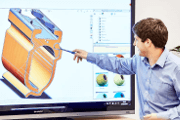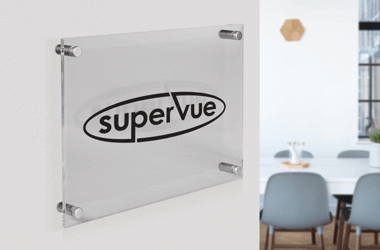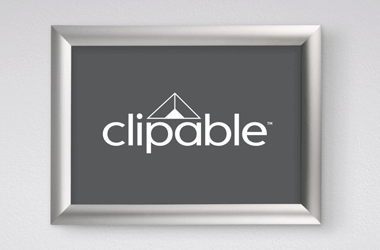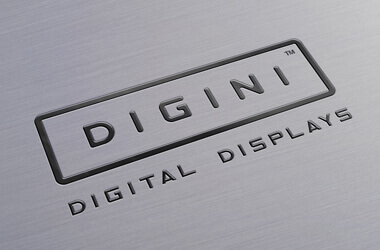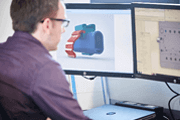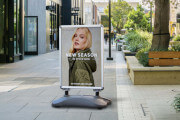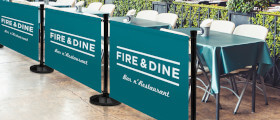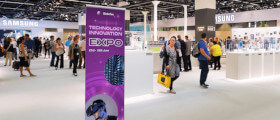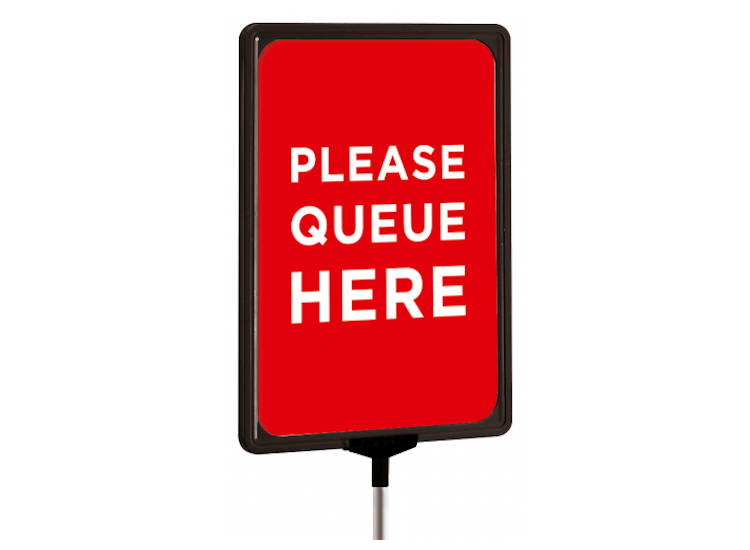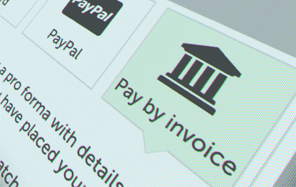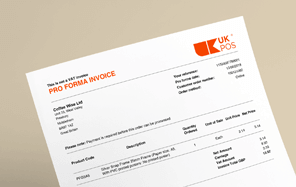The Psychology Of Retail Queuing
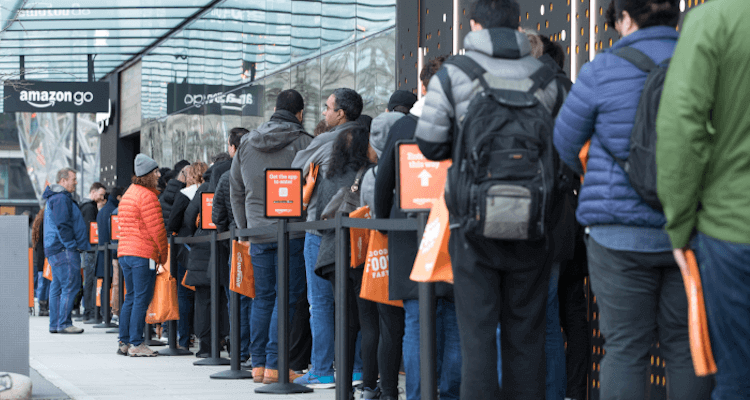
It’s a well known ‘fact’ that British people are the best in the world at queuing. We seem to have the subtle ability to channel our frustration and boredom into tuts and eye rolls, rarely letting our emotions spill over further. However, the simple act of waiting in line at a checkout, a bus stop or outside an event has the effect of triggering certain responses in our brains that affect our mood and perception of our environment.
Read on to discover how the psychology of queuing affects customer behaviour and learn the queue management measures to counteract any negative effects.
Bad queuing experiences can have the disastrous result of damaging your brand's reputation to the extent that a customer may not return to your store.
In fact, 59% of shoppers are not willing to wait in line [1].
Furthermore, 68% of consumers cite long checkout lines as reasons for not shopping in store [2].

We’ve all been in queues which have lasted ‘forever’ or gone by surprisingly quickly. If it takes too long, then the chances are the customer is going to look elsewhere.
What is the psychology of queuing?
The psychology of queuing relates to how customers perceive the experience of queuing. It's about the impact waiting has on shopping behaviours and how they feel about your brand.
What is queue management?
Queue management refers to how you can control the flow of people within a queue and the measures you can take to make the wait time faster and less stressful for customers. It's needed in almost every customer-facing industry. When implemented well, it can lead to better customer reviews, increased brand loyalty, and a boost in impulse purchases.
-
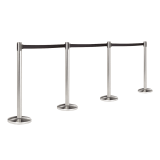
Retractable Queue Barrier Systems
RTB In stockFrom: £18.00 ex. VATView -

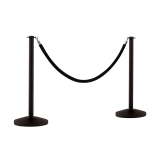
Black Rope Barriers
PRBK In stockFrom: £96.00 ex. VATView -
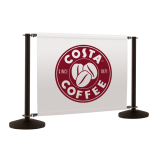
Cafe Barriers
PBB-SET Despatched in 7-10 working daysFrom: £43.47 ex. VATView -

Artificial Boxwood Hedge
BWH In stockFrom: £147.00 ex. VATView
The different types of queue
You need to understand queuing psychology and the techniques that retailers use to distract customers in order to create the illusion of a shorter queue, otherwise known as perceived waiting times. Most retail stores use one of the two most common queuing systems: single-line and multi-line.
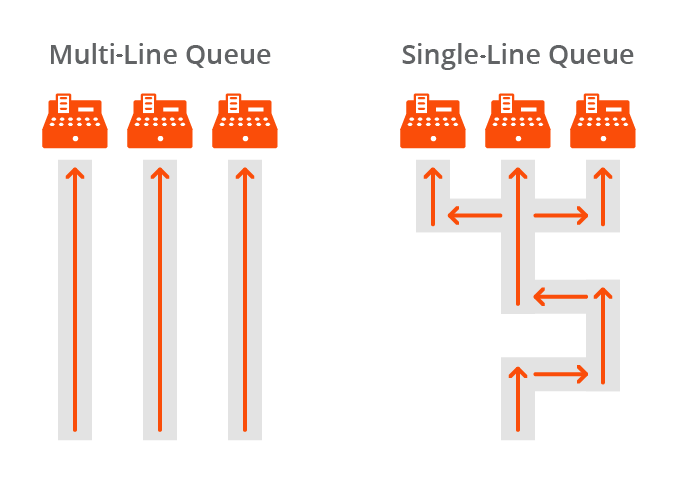
The multi-line queuing system is most often used by supermarkets, where shoppers have to pick a lane and hope that it moves quickly.
Single-line queues are commonly used in all other areas of retail, where there is only one queue for customers to join and the multiple checkouts are designated to customers waiting in the queue on a first come, first served basis.
Richard Larson, a professor specialising in queuing theory at MIT (the Massachusetts Institute of Technology), says that if both types of queue are functioning normally, there is little difference in the wait time [3]. However, the variance of wait times is bigger for the multi-line system as, if one line is taking longer than the other, it will slow down the service overall.
Perceived wait times
Retailers and event organisers have to think of their queue structures in a mathematical and psychological sense, as well as thinking about how queues can impact store layout.
Businesses need to focus on perceived waiting times rather than actual waiting times, as the two things are very different.
A watched pot never boils, so by the very same principle, a boring queue never moves forwards.
Studies have shown that boredom when queuing increases the perceived wait time for customers [4].

How do you deal with long lines?
No matter which queueing system you choose for your store, multi-line or single-line, there are always going to be occasions where your customers experience queues. So how can you avoid causing anxiety and stress to your customers and reduce the perceived wait time of your queues?
1. In-queue merchandising
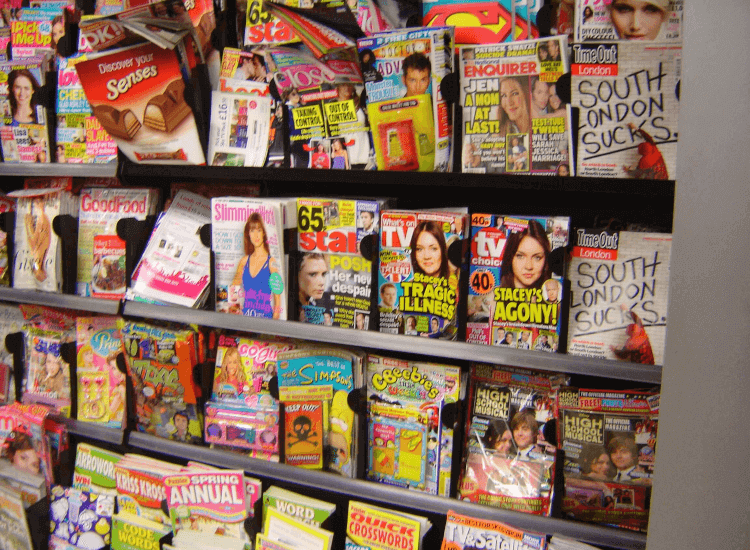
David Maister, writing in ‘The Psychology of Waiting Lines’, tells us that ‘occupied time feels shorter than unoccupied time’ [5]. If customers are standing in a queue with nothing to occupy them, they're likely to start feeling frustrated. This will impact negatively on their impression of your business.
Counteract customer boredom by displaying smaller products, such as accessories, magazines and confectionery, in your queue so that customers can browse while they wait. This has the added bonus of increasing revenue.
2. In-queue entertainment
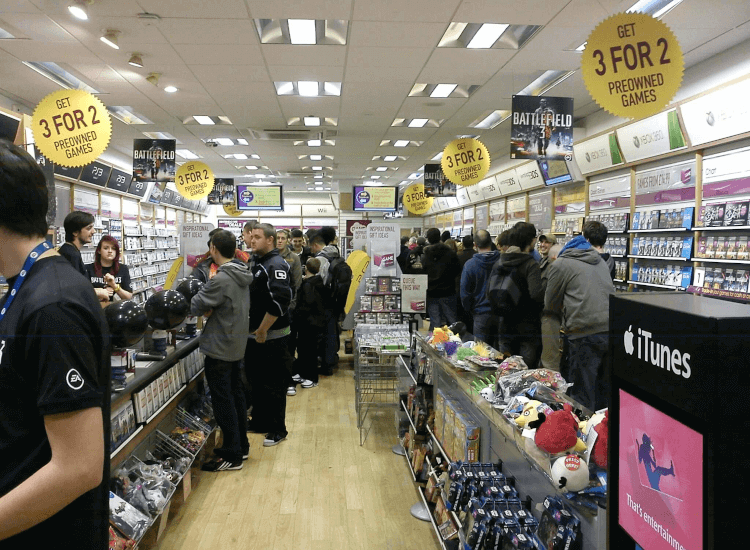
Humans need to be entertained in boring situations, especially in the modern era when nearly everybody has the Internet in the palm of their hands. If you know that your customers are going to be experiencing long wait times, consider giving them something to watch or read to keep their minds occupied.
If you run a restaurant, you could hand out menus to customers waiting for a table, which in turn reduces the service time once they are seated. Retailers can use digital signage to play short promotional videos to queuing customers.
3. In-queue signage and displays

Studies have shown that customers perceive ‘unfair waits’ as being longer than ‘fair waits’ [6]. If customers feel as though other customers have jumped ahead of them, or if another line is moving faster than theirs, they will start to become anxious.
Studies show that “a customer’s tolerance for wait in queue is proportional to the complexity or quantity of service anticipated by the customer” [7]. Use signage to indicate to customers where to queue and how much longer they can expect to queue for, to give realistic expectations.
"46% of shoppers say promotions would influence them to buy from a convenience store"[8]
Signage and add-ons
We ask ourselves questions when we have been queuing for a long time, including: Is this the right queue? Is somebody jumping ahead of me? Why is this queue taking so long?
Anxiety is a huge aspect of the queuing process for customers, especially within multi-lane queuing systems. Combat your customers’ fears by using clear signage to reassure them about how your system works. Signage can include information above each service desk to signify which line to join for ‘returns’ and ‘express lanes’.
This will help reduce anxiety and could provide potential revenue opportunities in the form of advertisements and informational notices [9].
Digital displays for queuing
Digital display screens and totems are a great way to provide distractions for waiting customers. 64% of UK shoppers check social media on their phones whilst waiting in queues (Tensator, 2018). Instead of allowing your customers to lose themselves in their own content, why not offer them something that benefits you as a business?
Playing videos, images or presentations on digital screens for customers to watch while waiting can reduce perceived wait times by as much as 35% [10].
We are drawn to moving displays more than static posters and a digital sign has the effect of drawing customer’s attention away from the queue.
Recall rates for advertisements on digital signage was 52% [11].
-


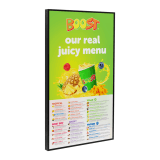
High Brightness Display Screen for Shop Windows
DDUH In stockWas: £1,720.00 From: £1,590.00 ex. VATView -



43" Wall Mounted Digital Advertising Screen
DDW In stockWas: £1,494.59 £995.00 ex. VATView -

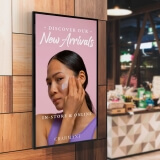
Android Wall Mounted Digital Display Screen
DDW2 In stockFrom: £564.00 ex. VATView -
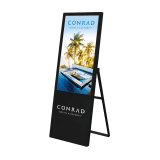
Digital A Board 43"
DAB02 In stockFrom: £1,059.91 ex. VATView
Summary
The most important thing to consider when designing and implementing a queue system within your business is perceived wait times. However long a queue is, the perceived wait time can be reduced using some of the point of sale displays above, as well as employing the following techniques.
Be honest with customers

There is nothing worse than being stuck in a long queue with no end in sight, only for a customer service assistant to walk past and not give you any further information. Ask a member of staff to let customers know what is causing the delay. This up-front honesty will gain you respect from your customers and reassure them that the issue is being resolved.
If you do not give customers any indication of why the wait time is long, then you will leave them with a bad perception of your business and make them unlikely to return.
Begin service before the queue ends
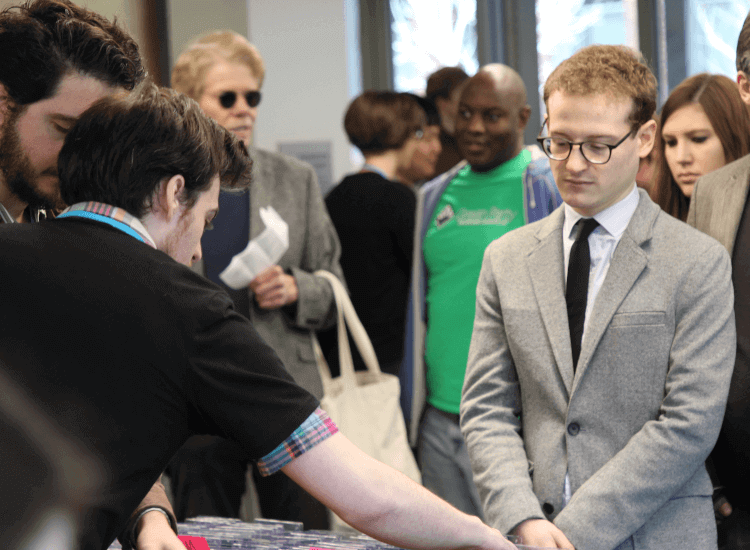
Service doesn’t have to begin once customers reach the end of a queue. Once a customer has an interaction with the business, service has begun. Ways of starting service from within a waiting line can include: handing out menus to queuing diners, helping customers unload their trolleys or baskets, or handing out relevant paperwork to fill in while waiting.
All of these examples end up saving service time for the customer service employee at the end of the queue, which in turn will work to keep the queues moving faster.
A combination of good customer service, distractions and honesty will more likely leave customers with a positive view of your business, even if they’ve had to wait in line for a long time.
-
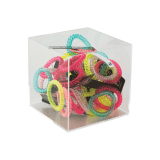
Five Sided Acrylic Display Cube
AQQ In stockFrom: £7.06 ex. VATView -
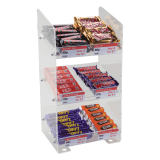
Three Tier Confectionery Acrylic Merchandising Display
CTM02 In stock£65.94 ex. VATView -
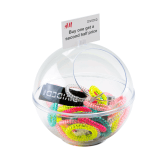
Clear Display Sphere Counter Standing
SPR In stockFrom: £12.97 ex. VATView -
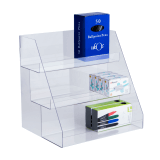
Countertop Acrylic Display Unit
CTM01 In stock£38.90 ex. VATView
References
1.
Dahm, Wentzel, Herzog and Wiecek, ‘Breathing Down Your Neck! The Impact of Queues on Customers Using a Retail Service’, Journal of Retailing, Volume 94, Issue 2, June 2018, pages 217-230.2.
Langford, Robin, 'Retail trends: Youngest shoppers most likely to buy in-store as seasonal purchases begin' (September 2019), Net Imperative,3.
Swanson, Ana, ‘What really drives you crazy about waiting in line (it actually isn’t the wait at all)’ (2015), Washington Post, https://www.washingtonpost.com/news/wonk/wp/2015/11/27/what-you-hate-about-waiting-in-line-isnt-the-wait-at-all/.4.
Tšernov, Kirill, ‘The Psychology of Queuing As a Key to Reducing Wait Time’, Qminder, https://www.qminder.com/queue-psychology-reduce-time/.5.
Maister, David, ‘The Psychology of Waiting Lines’ (1985), https://davidmaister.com/articles/the-psychology-of-waiting-lines/.6.
‘The psychology of queuing revealed in 6 simple rules’ (2019), Queue It, https://queue-it.com/blog/psychology-of-queuing/.7.
Edward L. Melnick, Praveen R. Nayyer, Michael L. Pinedo & Sridhar Seshadri, Creating Value in Financial Services: Strategies, Operations and Technologies, (Springer Science + Business Media, New York, Second Edition, 2002), p. 330.8.
Widdowson, Nick, ‘Asian Trader’ (2019), Vol. 32, No. 850, p. 32.9.
‘Psychology Of Queuing – What Are Customers Thinking About Whilst Queuing?’ (2018), Tensator, https://www.tensator.com/psychology-of-queuing/.10.
Anderson, Celia, ‘How digital signage reduces perceived wait times’, Digital Signage Today, 2015, https://www.digitalsignagetoday.com/blogs/how-digital-signage-reduces-perceived-wait-times/.11.
Kuklin, Perry, ‘The business case for digital signage in the waiting line’, Digital Signage Today, 2014, https://www.digitalsignagetoday.com/articles/the-business-case-for-digital-signage-in-the-waiting-line/.





